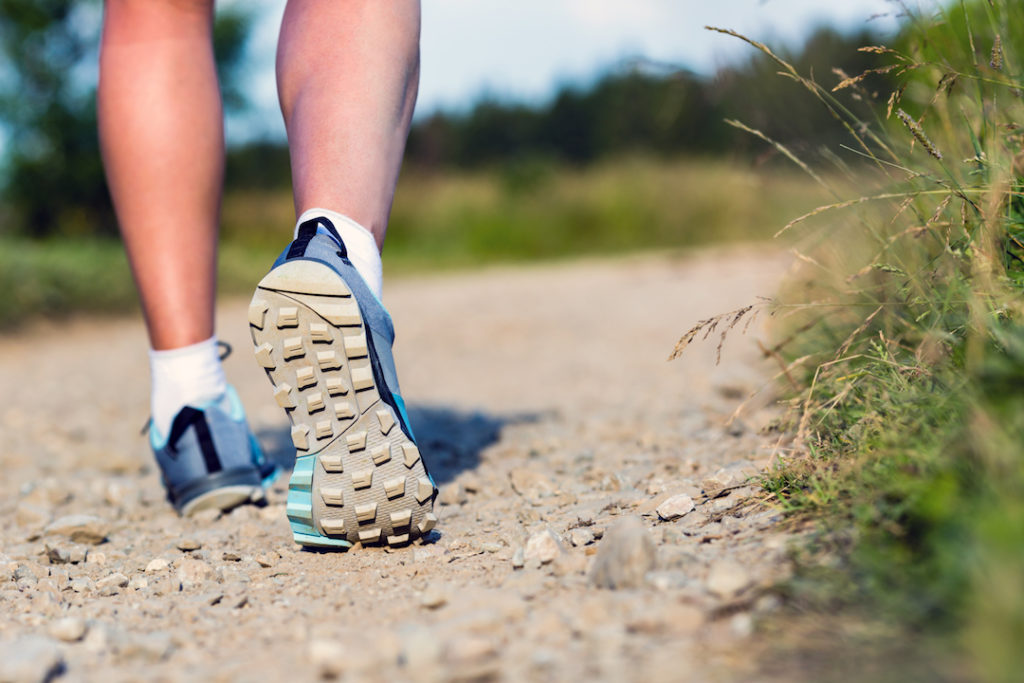5 Exercises to Jump Start Your New Fitness Routine
March 14 2019
If you’re looking for a solid starting point in your fitness routine that won’t make you feel overwhelmed, here are 5 exercises to jump start your new fitness routine:
Walking
And no, you don’t need to run! Aim to walk at a quick pace for at least 30 minutes, most days of the week. You can absolutely split up the walking throughout the day into 10-minute blocks to fit it into your schedule. By walking, we activate our glute muscles which are notoriously weak. Weak glute muscles can lead to hip and back pain, so it’s important to keep these muscles strong and balanced. With walking almost every day, you can also improve your heart health, endurance, and also increase your overall calorie burn for the way.
Bent-over rows
For many of us, our chest muscles are in a tightened position throughout most of the day. We’re often hunched over: at our computer, looking at our phone, or driving. When these chest muscles are tight, the opposing muscles in our back are weak, so it’s important to focus on stretching the muscles in our chest.
How to do a bent-over row:
Your feet will be just under your hips with a slight bend at the knees. Hinge forward from your hips, keeping your back flat (shoulders pulled back) and core braced. Lifting up from your elbows, bring them high and wide, engaging into your rear delts. Stop the elbows at shoulder height before carefully lowering back down. Try 3 sets of 15.
Squats
Squats are an effective functional exercise, which means that we perform this exercise often in our daily life. Think of how many times throughout the day we move from a seated to standing position. We want to keep these muscles strong so that we can safely perform this movement over time.
How to do a squat:
Stand with feet hip-width or slightly wider, and toes slightly turned out. Focus on sitting back, while keeping your chest lifted and a tight core. Inhale to lower, exhale to rise. Make sure that your knees go towards your toes, but not far past your toes. Sink your hips as low as your flexibility allows, whether it’s a small squat, or to hips just above knee level. You can squat lower than knee level if it works for you, but generally it’s not something that I recommend. Try 3 sets of 15.
Planks
Planks are commonly regarded as a core exercise, but after about 10 seconds, we begin to recruit our entire body to stabilize. Our shoulders, triceps, glutes, calves and chest muscles all kick in to maintain this position. The important thing to remember is to breathe and to keep your stomach pulled in – it should feet supported and not like it’s actively pushing out.
How to do a plank:
Place your hands on the floor, and then walk your feet back, so only your hands and the pads of your toes are pressing into the floor. Make sure that your body is in one straight line from your head, all the way back through your knees or toes (depending on whether you’re modifying). If you’re on your toes, press back through your heels, and no matter what, keep your hips in line with your spine. Tilt your chin away from your chest so your neck stays long, and take some nice deep breaths. If you come down to your knees, make sure to keep your hips down in line with your body. You can also plank against the wall, or with your hands on a countertop. Try 15 seconds and then add on 10-seconds as you continue to get stronger.
Upright rows
Upright rows strengthen the muscles in your shoulders. Since shoulders are a smaller muscle group, they respond to training extremely well and you may be able to notice physical changes fairly quickly.
How to do an upright row:
Stand with legs shoulder-width apart and hold a pair of dumbbells down by your sides. Bend your arms at the elbows, then lift your elbows out to the sides to shoulder height (weights will be at your mid-chest), then lower back down. Try 3 sets of 15.
—
Sourced from WebMD.
